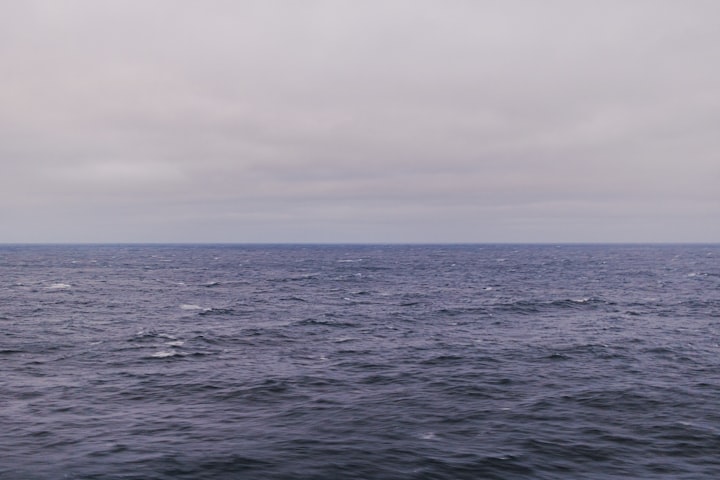Ancient Beasts Scarier than Dinosaurs
Prehistoric Terrors

The age of dinosaurs has long captivated our imaginations, conjuring images of giant reptiles roaming the Earth. But what if I told you that there were creatures even bigger, badder, and more ferocious than dinosaurs? From the depths of the oceans to the vast plains of prehistoric landscapes, ancient creatures ruled the world with terror and might. In this article, we will delve into the fascinating world of some of these forgotten monsters, each more terrifying than the last.
1. Dunkleosteus: The Ferocious Armor-Plated Fish
During the late Devonian Period, around 370 to 360 million years ago, a monstrous fish called Dunkleosteus dominated the ancient seas. Unlike the graceful creatures we associate with underwater life, Dunkleosteus was a brute with its streamlined, shark-like body and an armored head. This fierce fish lacked proper teeth, but its two long bony blades could snap and crush almost anything, including other Dunkleosteus. Capable of generating up to 8000 pounds of bite force per square inch, it was an apex predator of its time. However, its insatiable appetite often led to indigestion, leaving behind fossilized remains of regurgitated prey.
2. Helicoprion: The Mystery of the Whirling Tooth Whorl
Around 270 million years ago, the Helicoprion terrorized the oceans with its bizarre, fossilized tooth whorls. For over a century, scientists puzzled over the arrangement of these elongated teeth, speculating on the creature's appearance. In 2013, a breakthrough study proposed that the toothy whorl completely filled the lower jaw, resembling a buzz-saw formation. As the jaw closed, the teeth rotated backward in a saw-like motion, allowing the Helicoprion to catch and consume its prey. With a two-foot-wide jaw, this nightmarish sea creature was a true predator of the deep.
3. Terror Birds: South America's Top Land Predators
After the extinction of fearsome dinosaurs, the terror birds (Phorusrhacidae) rose to dominance in South America. Standing up to 10 feet tall, with T-Rex-like feet and hooked beaks, these predatory birds were a force to be reckoned with. They preyed upon herbivorous mammals, thriving in an era when South America was an isolated island with an abundance of plant-eating animals. Armed with powerful beaks and clawed feet, the terror birds ruled as apex predators for around 60 million years before eventually fading into extinction 2.5 million years ago.
4. Platybelodon: The Nightmarish Elephant with a Spork-Like Jaw
Traveling back 8 to 20 million years ago, we encounter Platybelodon, a prehistoric ancestor of the modern elephant. With a jaw featuring a second pair of widened tusks, this bizarre creature's purpose for such a tool puzzled scientists for decades. Initially believed to be used for scooping and dredging soft vegetation in aquatic environments, later studies proposed that they were scythe-like weapons, used to slice through thick vegetation. These creatures roamed Miocene Asia, Africa, and North America, wielding their terrifying spork-like jaw.
5. Andrewsarchus: The Ferocious Mammalian Giant
Although not a dinosaur, Andrewsarchus makes its way onto this list due to its terrifying proportions. With a nearly three-foot-long skull and a 16-foot-long body, this ferocious mammal walked the Earth during the Eocene era, approximately 45 to 36 million years ago. Its massive teeth suggested a carnivorous diet, making it the largest known meat-eating land mammal in history. Its relation to modern-day hippos and whales in the order of artiodactyls added to its enigmatic appearance.
6. Titanoboa: The Giant Serpent of the Prehistoric Swamps
Imagine a snake measuring nearly 50 feet long and weighing a colossal 2,500 pounds—this was Titanoboa, the largest snake ever known. Living 60 million years ago during the Palaeocene epoch, Titanoboa reigned over a world that was hotter, wetter, and filled with larger creatures than today. Its immense size was attributed to the surplus of oxygen in the atmosphere during its time, enabling such colossal creatures to thrive. Titanoboa, an ambush predator, feasted on giant turtles, crocodiles, and other large reptiles, making it the stuff of nightmares.
7. Jaekelopterus: The Giant Sea Scorpion
Eurypterids, commonly known as sea scorpions, were mostly small creatures, except for the terrifying Jaekelopterus. This sea scorpion, which lived around 460 million years ago during the Silurian period, grew up to eight feet in length, making it the largest arthropod ever known. With a segmented body and paddle-shaped appendages, Jaekelopterus had a spiky appearance reminiscent of the face-huggers from the Alien franchise. Its massive claws were used to snatch up fish, making it a formidable predator of prehistoric waters.
8. Phoberomys Pattersoni: The Giant Ratzilla
If you thought regular rats were scary, imagine encountering a 10-foot-long rat with another five feet of tail. Phoberomys Pattersoni, the largest rodent to have ever lived, thrived between 8 and 20 million years ago in South America. Despite its rodent-like appearance, this creature was more similar to the modern-day capybara, but on a much larger scale. It likely fed on terrestrial plants, but its foot-long incisors could have caused serious damage if provoked.
9. Hallucigenia: The Prehistoric Enigma
Hallucigenia, a thumb-sized worm from the Burgess Shale, perplexed scientists for over 50 years. Originally identified with tentacles, it was later discovered that these were actually legs, causing the entire creature to be flipped upside down. This unusual marine creature lived around 500 million years ago during the Cambrian period. With its bizarre appearance, including a grinning mouth filled with teeth, Hallucigenia remains one of the freakiest creatures in Earth's history.
10. Mosasaurus: The Mighty Sea Predator
Although not technically dinosaurs, mosasaurs were massive marine reptiles closely related to snakes and monitor lizards. The fearsome Mosasaurus dominated the ancient seas some 80 to 66 million years ago. These warm-blooded carnivores, measuring around 45 to 50 feet and weighing over 5.5 tons, preyed on ammonites, bony fish, sea turtles, and even other marine reptiles. Their impressive size and ferocity made them the apex predators of their time until the K-Pg extinction event wiped them out.

Prehistoric Earth was a world of unimaginable terrors, filled with creatures that would send shivers down our spines today. From the ferocious Dunkleosteus to the giant Titanoboa, each of these ancient beasts holds a place in our fascination with the past. Although they have long vanished from the Earth, their stories continue to captivate our minds and spark our imaginations. These prehistoric monsters are a reminder of the incredible diversity and grandeur that once graced our planet.






Comments
There are no comments for this story
Be the first to respond and start the conversation.